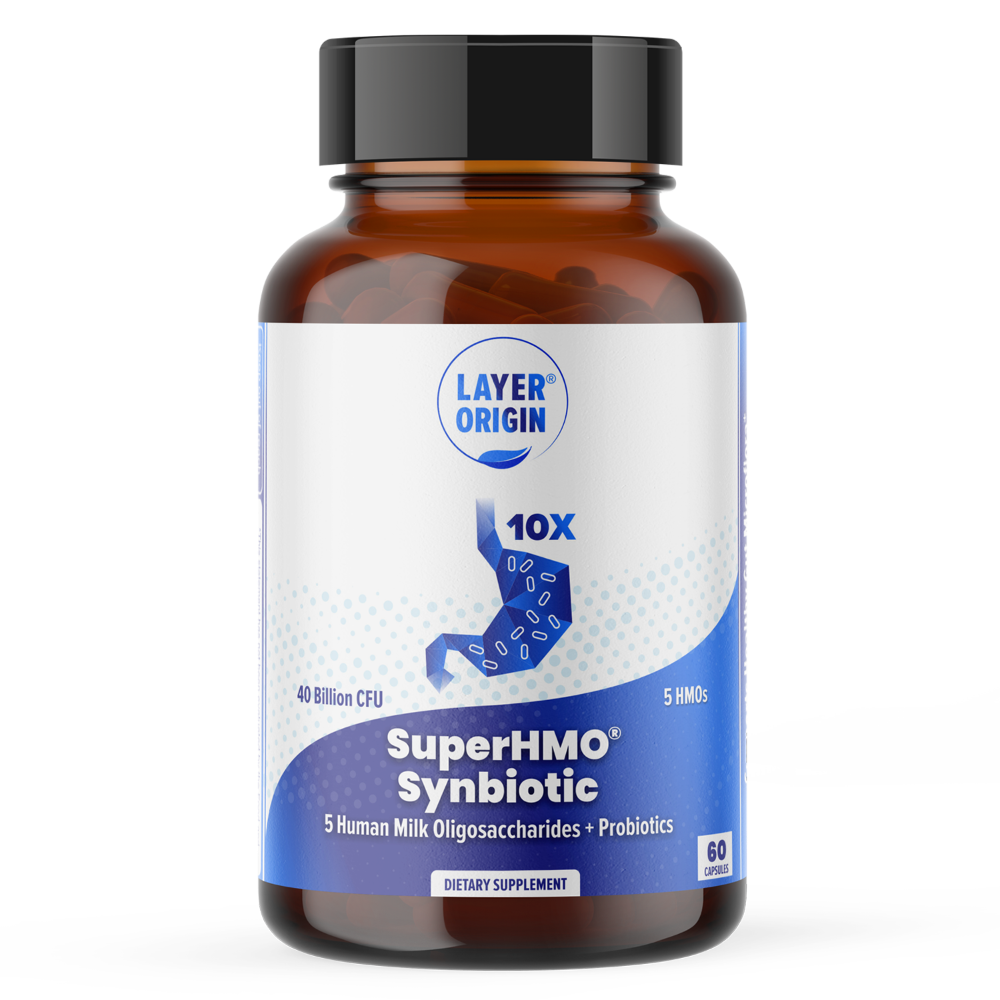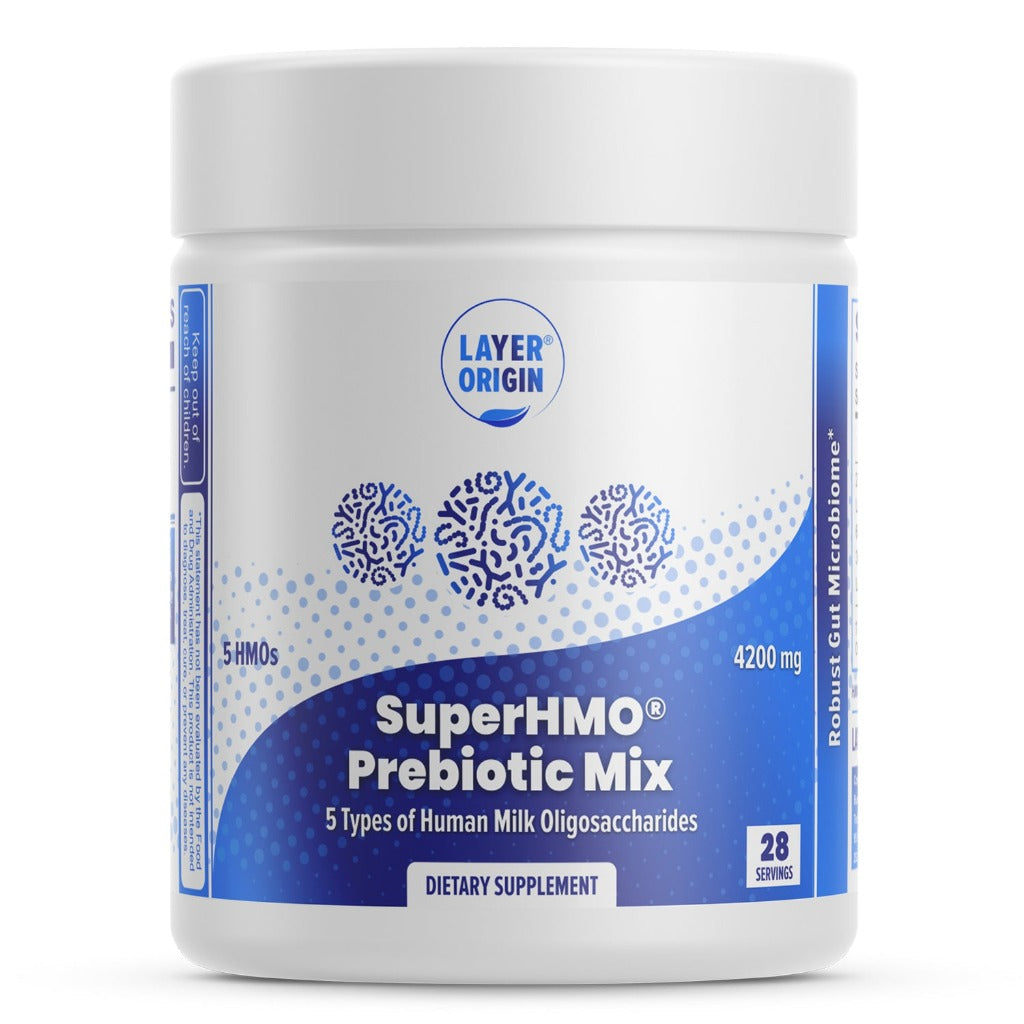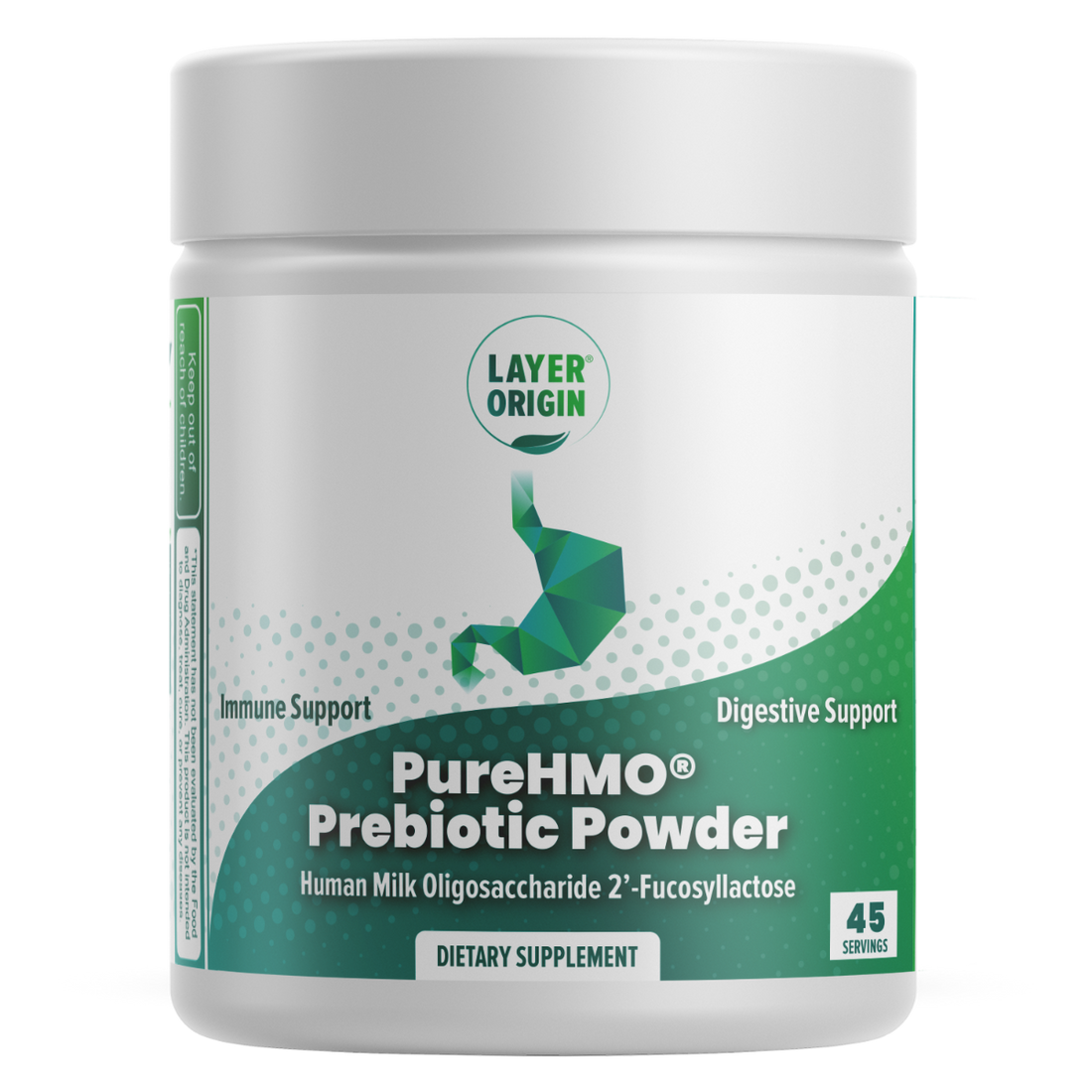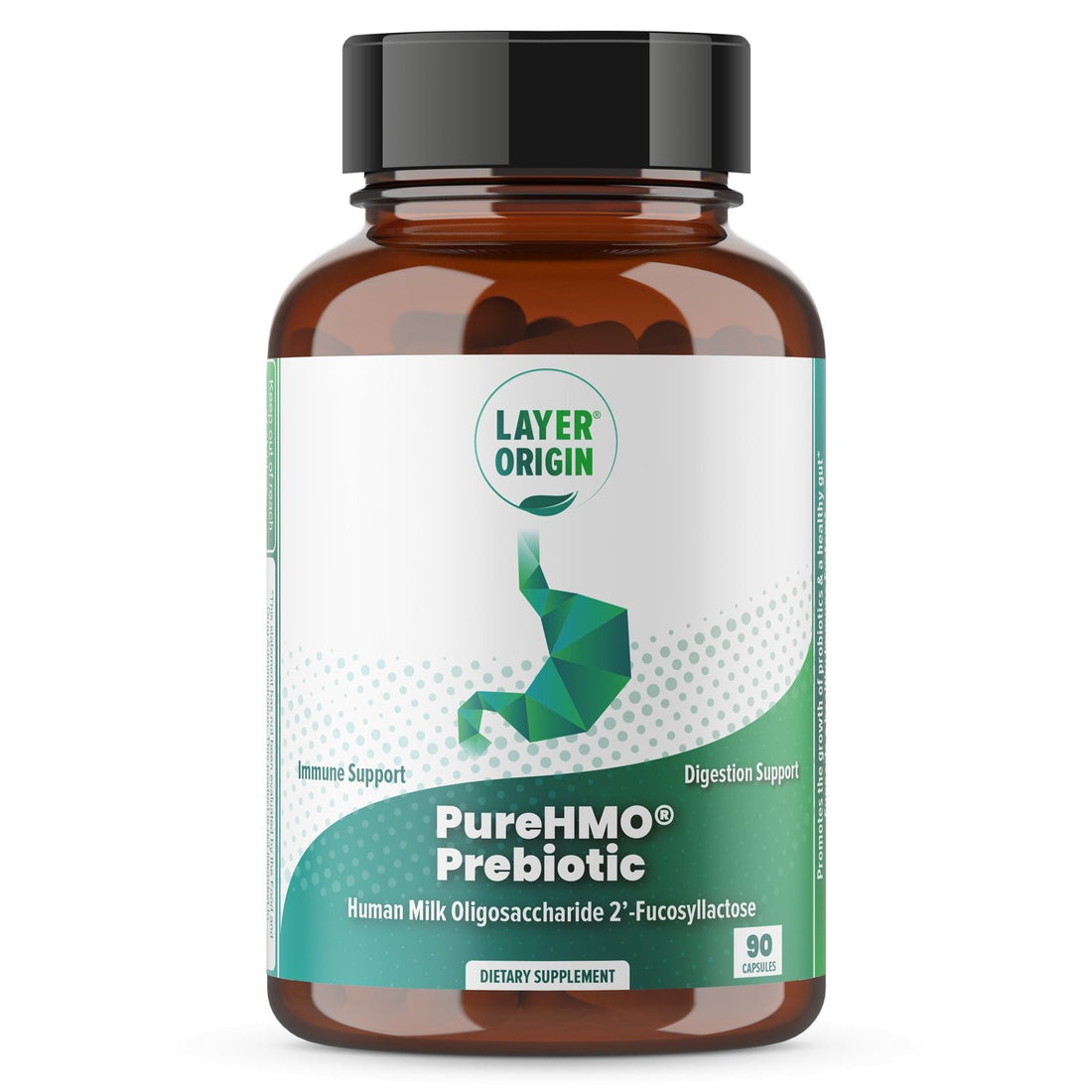Explore how the gut bacterium Akkermansia muciniphila naturally supports glucagon-like peptide-1 (GLP-1) production — a hormone crucial for blood sugar balance, appetite control, and metabolic health — and why both live and pasteurized forms, used together, may offer complementary benefits for gut and metabolic wellness.
Content Outline
Since it was discovered in 2004, Akkermansia muciniphila has become one of the most talked-about microbes in gut health research. Scientists are calling it a next-generation probiotic with powerful effects on metabolism and digestive health [1]. In other words, it’s a rising star of the microbiome world.
More recently, researchers have discovered that Akkermansia can help trigger important hormones such as glucagon-like peptide-1 (GLP-1) — the same hormone targeted by popular weight-loss drugs. GLP-1 plays a key role in controlling appetite, blood sugar, and energy balance.
Studies have long shown that people with lower levels of Akkermansia in their gut are more likely to experience obesity and metabolic issues, while higher levels tend to be linked with better metabolic health [2].
Understanding how this single bacterium boosts GLP-1 gives us a glimpse into the remarkable connection between our gut microbes and metabolism — and it couldn’t be more timely. With roughly one in eight American adults now taking GLP-1 drugs, could the gut itself hold a safer, more natural way to support metabolic health? In this article, we’ll explore how Akkermansia muciniphila influences GLP-1 and whether live or pasteurized forms may offer the biggest benefits.
What is GLP-1 and why does it matter?
Glucagon-like peptide-1 (GLP-1) is a hormone that’s naturally produced and released in the gut during digestion. It has crucial roles in regulating appetite and blood sugar levels [3] because it:
-
stimulates insulin secretion from the pancreas
-
slows down gastric emptying, or how quickly food leaves the stomach
-
suppresses appetite and lowers calorie intake
-
regulates blood sugar
GLP-1 is the same hormone that is the central target for GLP-1 receptor agonist medications, like semaglutide and tirzepatide, which have shown remarkable success in supporting weight loss and glucose control. Research shows that semaglutide can support an average weight loss of 15-17% over 68 weeks [4], while tirzepatide has shown greater losses of 22.5% across 72 weeks at its maximum dose [5].

Figure 1. How GLP-1 receptor agonists work. Medications like semaglutide and tirzepatide are injected once weekly below the skin, binding to GLP-1 receptors to mimic the hormone's effects and promote weight loss.
Given the growing global interest in GLP-1-related therapies, scientists are now exploring natural ways to support GLP-1 production and facilitate weight loss – enter Akkermansia muciniphila.
Akkermansia muciniphila: The gut's mucus specialist
Akkermansia muciniphila is a natural inhabitant of the human gut, accounting for approximately 3% of the total adult gut microbiota [6]. It has an interesting survival mechanism: it uses mucin as its primary carbon and nitrogen source. Whereas other gut microbes break down dietary fiber for sustenance, Akkermansia degrades the mucin in the lining of the gut. This not only benefits the microbe but also you by increasing mucin production, strengthening the gut barrier, preventing leaky gut syndrome, and keeping chronic disease at bay.

Figure 2. How Akkermansia muciniphila prevents leaky gut.
Some of the other essential roles of Akkermansia muciniphila include:
-
Production of beneficial metabolites: By breaking down mucin, Akkermansia generates short-chain fatty acids (SCFAs), like acetate and propionate, which nourish intestinal cells, support immunity, and regulate metabolism.
-
Balancing inflammation: Multiple studies have demonstrated that Akkermansia reduces low-grade inflammation, thereby improving gut barrier function, immunity, and metabolic health [7].
Low levels of Akkermansia in the gut have been linked to obesity, insulin resistance, and metabolic syndrome, while increased levels are associated with lean body types and improved glucose control [8].
How Akkermansia stimulates GLP-1 production
There’s no denying that the gut microbiome and host metabolism are tightly intertwined. One of the most fascinating discoveries in recent years is that gut microbes, such as Akkermansia muciniphila, can directly influence the secretion of GLP-1 from intestinal cells.
Akkermansia can do this by stimulating intestinal L cells to secrete GLP-1. Studies have shown that GLP-1 can serve as a marker of inflammation, as levels rise during gut injury or inflammation, or after exposure to lipopolysaccharide (LPS). This suggests that intestinal L cells respond to gut barrier disruption by releasing GLP-1, which involves toll-like receptor 4 (TLR4) signalling, and that Akkermansia plays a critical role by directly inducing L cells to release GLP-1 [9].
One of the latest research studies found that bacterial cell extracts of A. muciniphila can slightly increase insulin secretion from pancreatic beta cells and a 2000% increase in GLP-1 secretion from intestinal L cells [10]. This 2025 study supports the hypothesis that A. muciniphila extracts could have therapeutic potential for managing type 2 diabetes and obesity, especially because they increase GLP-1 production.
Akkermansia can also produce SCFAs, particularly acetate, butyrate, and propionate, which can modulate inflammation. They bind to G-protein-coupled receptors (GPR41, GPR43, and GPR109A) on intestinal L cells, stimulating GLP-1 production and lowering inflammatory biomarkers. Interestingly, butyrate increases GLP-1 secretion from L cells (see Fig. 3).

Figure 3. Probiotics, butyrate, and increased production of GLP-1. Yadav and Colleagues demonstrated that supplementing a high-fat diet with a highly concentrated probiotic (VSL#3) reduced the abundance of Firmicutes and increased Bifidobacteria and Bacteroidetes. In turn, this increased SCFA production, particularly butyrate. Butyrate stimulated GLP-1 production by intestinal L cells, enhanced metabolic function, and prevented obesity [11].
A. muciniphila’s beneficial effects also stem from the specific proteins and metabolites it produces. One of its unique outer-membrane proteins, Amuc_1100, can activate TLR2 and bind to L cells, further enhancing GLP-1 production. Interestingly, the protein remains effective even after pasteurization [9].
Another protein, P9, directly triggers the production of the GLP-1 hormone through various mechanisms, including binding to intestinal cell receptors and enhancing IL-6 production. Earlier mouse studies have shown that A. muciniphila also increases thermogenesis (heat generation, which contributes to energy expenditure) and GLP-1 secretion in mice fed a high-fat diet [10] by producing P9. However, there are still questions around P9’s mechanism, whether it's present in other bacterial species and whether it influences the secretion of other gut hormones, such as GLP-2 and peptide YY. So, further research is still required.
Pasteurized vs live Akkermansia
If you’re interested in boosting your Akkermansia muciniphila abundance, you might be interested in taking a probiotic containing the beneficial microbe. Akkermansia supplements are available in two forms, live and pasteurized.
-
Live Akkermansia contains live bacterial cells and thrives in the mucosal layer, supporting mucin renewal and ongoing gut barrier maintenance.
-
Pasteurized Akkermansia is not alive, but offers bioactive cell components such as the outer membrane protein Amuc_1100 that interacts directly with host receptors to enhance GLP-1 production and improve metabolic signaling.
Traditionally, probiotics are believed to work best in their live form because living bacteria can colonize and interact directly with the gut environment, but Akkermansia challenges this view.
Ashrafian et al (2021) compared the effects of both live and pasteurized A. muciniphila in normal diet-fed mice and found that while both induced better gut structure and had no negative effects on liver, colon, or fatty tissues, pasteurized Akkermansia had a more profound effect on biochemical parameters and inflammatory biomarkers [12].
Furthermore, Plovier et al (2017) discovered that pasteurization of Akkermansia muciniphila enhanced its ability to reduce the development of fat, insulin resistance, and blood fats in mice and that the protein Amuc_1100 remains stable following pasteurization. [13].
Both forms offer distinct and complementary benefits for your gut and wider metabolic health.
Could combining pasteurized and live Akkermansia offer more benefits?
Both pasteurized and liver Akkermansia muciniphila act on complementary parts of the GLP-1 pathway and gut barrier, which makes a combined approach plausible and tempting. However, research is lacking comparing the benefits of combining the two to enhance metabolic benefits.
As we have seen, pateurized A. muciniphila retains, and in some cases enhances, the activity of outer membrane proteins like Amuc_1100 and secreted proteins, such as P9. These proteins bind to or interact with host receptors, including ICAM-2 and TLR-2, on intestinal L cells to drive GLP-1 secretion and improve insulin sensitivity.
Live cells, on the other hand, metabolize mucin, increasing mucus production and generating short-chain fatty acids to further stimulate GLP-1 secretion. Taken together, a dual strategy could potentially amplify GLP-1 and metabolic benefits. However, direct combination studies are needed to prove this theory.
What does this all mean for gut and metabolic health?
The relationship between Akkermansia and GLP-1 offers exciting potential for supporting natural metabolic balance. By stimulating GLP-1 production and strengthening the gut barrier, Akkermansia can help:
-
Improve insulin sensitivity and blood sugar control
-
Keep you feeling fuller for longer, reducing food intake
-
Lower inflammation that’s associated with metabolic dysfunction
-
Support a healthy gut lining that’s crucial for immune balance and nutrient absorption
In addition to Akkermansia probiotics, several dietary factors can influence gut abundance. Although it primarily degrades mucin as its main energy source, prebiotics such as fructo-oligosaccharides (FOS), red dietary polyphenols, and Bifidobacteria supplements may help increase the population [14].
That’s not all. Research also shows that Akkermansia can thrive on human milk oligosaccharides, particularly in early life [15]. HMOs are complex carbohydrates that are naturally found in human breast milk and have been shown to selectively stimulate beneficial bacteria, both directly and indirectly through mechanisms such as cross-feeding. The HMO 2’-Fucosyllactose (2’-FL) is highly abundant and can serve as an energy source for Akkermansia [16].
Summary
GLP-1 weight loss medications are big news, but despite their effectiveness, they can cause side effects, are expensive, and artificial. A natural gut inhabitant, Akkermansia muciniphila, can boost GLP-1 production through several mechanisms, supporting blood sugar balance, appetite control, and weight management.
Both live and pasteurized forms of Akkermansia are safe and well-tolerated, but pasteurized versions may have enhanced benefits. While combining both could deliver a synergistic effect, supporting both gut and metabolic health.
As research continues, Akkermansia muciniphila could offer a natural, safe therapeutic approach to metabolic health.
Keen to boost the population in your gut? Order your Akkermansia muciniphila Daily Probiotic with PureHMO Prebiotic for Weight Management today. Hurry, a limited-time offer is available to get yours for 24% less.
Written by: Leanne Edermaniger M.Sc. Leanne is a professional science writer who specializes in human health and enjoys writing about all things related to the gut microbiome.








